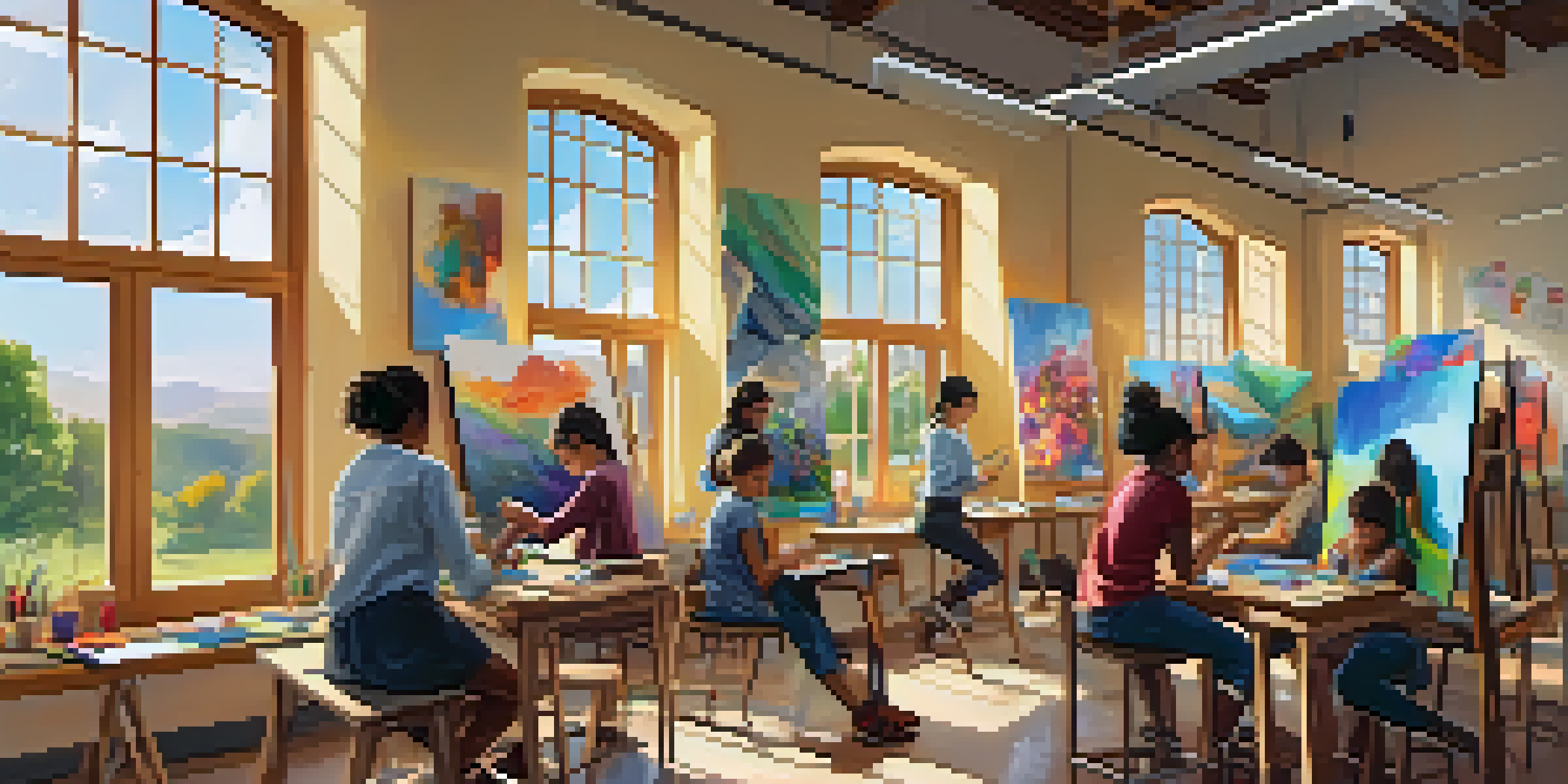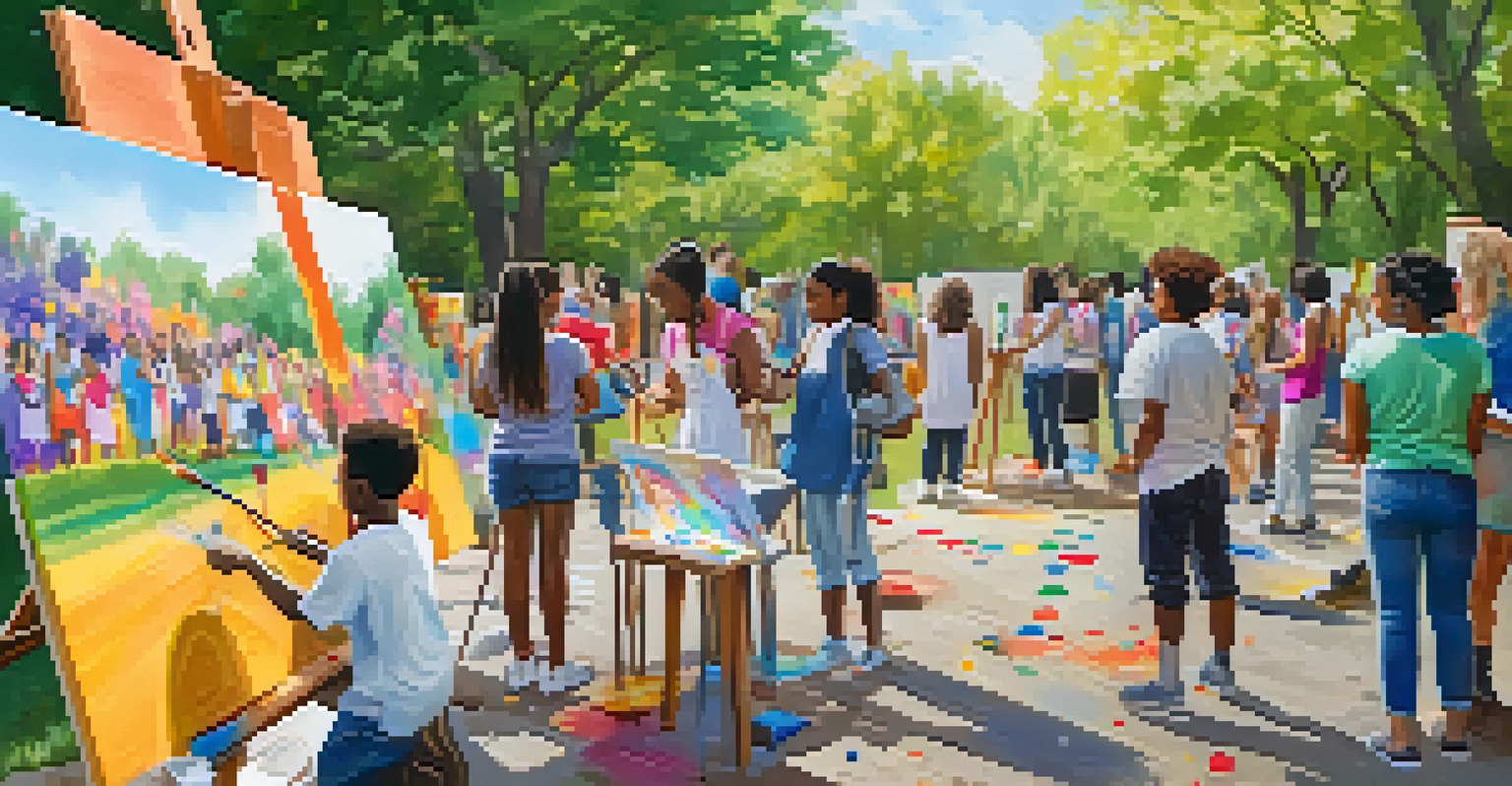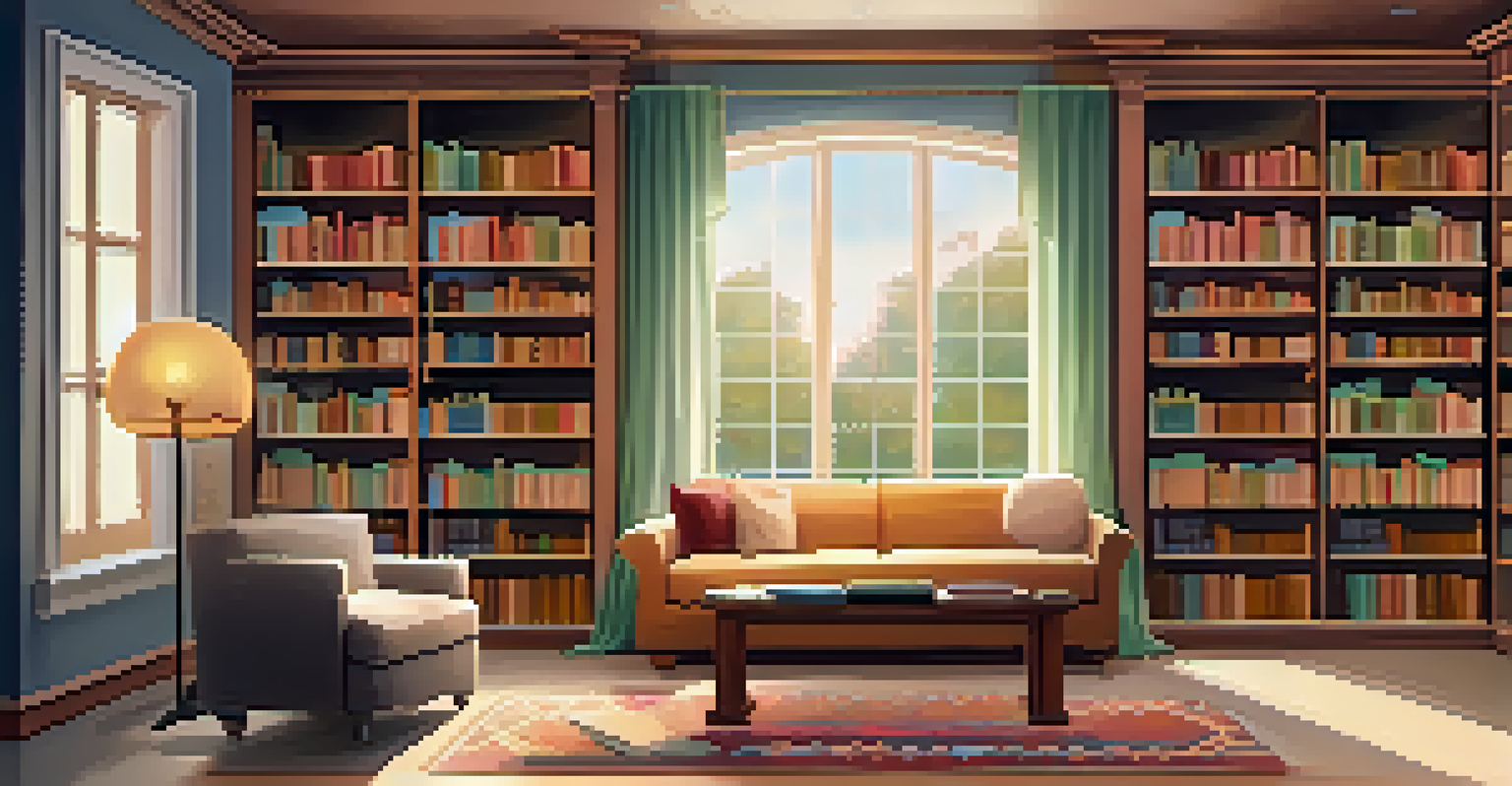Art and Culture Programs in St. Louis Schools: A Holistic Approach

The Importance of Art and Culture in Education
Art and culture play a crucial role in shaping well-rounded students. They foster creativity, critical thinking, and emotional intelligence, which are essential skills in today's world. By integrating these elements into the curriculum, schools can enhance student engagement and academic performance.
Art enables us to find ourselves and lose ourselves at the same time.
Research shows that exposure to the arts can lead to improved learning outcomes across various subjects. For instance, students involved in music and visual arts often excel in math and reading. This holistic approach not only enriches their educational experience but also prepares them for diverse career paths.
Moreover, art and culture programs promote inclusivity and diversity within the school environment. They allow students from different backgrounds to share their stories and perspectives, fostering a sense of community and belonging.
Innovative Art Programs in St. Louis Schools
St. Louis schools have embraced innovative art programs that cater to various interests and skills. From traditional painting and sculpture to digital media and performance art, students have a plethora of options to explore their creativity. These programs often collaborate with local artists and organizations, providing students with real-world experiences.

For example, some schools have partnered with community art centers to offer workshops led by professional artists. This not only enriches the curriculum but also helps students build valuable connections in the art world. Such collaborations can spark passion and inspire students to pursue their artistic interests further.
Art Enhances Student Engagement
Integrating art and culture into education fosters creativity and critical thinking, leading to improved academic performance.
These innovative programs also focus on interdisciplinary learning, where art is integrated into subjects like history and science. This approach makes learning more engaging and relevant, allowing students to see the connections between different fields of study.
Cultural Awareness Through Arts Education
Arts education in St. Louis schools is a powerful tool for promoting cultural awareness. Through exploring various artistic traditions and practices, students gain a deeper understanding of different cultures and histories. This awareness fosters empathy and respect for diversity, which are essential values in today’s global society.
The arts are not a luxury; they are a necessity for the full and complete education of our children.
For instance, students may participate in projects that highlight the contributions of different cultures to the arts. These projects not only educate students about cultural heritage but also celebrate the richness of diversity within their community. Engaging in such activities can lead to a greater appreciation for the arts and the stories they tell.
By celebrating cultural heritage through arts education, schools help build a more inclusive environment. This not only enriches students' learning experiences but also prepares them to navigate an increasingly interconnected world.
The Role of Community Partnerships in Arts Programs
Community partnerships are vital for the success and sustainability of arts programs in schools. Local artists, art organizations, and cultural institutions often provide resources, expertise, and funding that enrich the educational experience. These collaborations can lead to exciting opportunities for students, such as field trips, guest speakers, and hands-on workshops.
For example, a partnership with a local museum can offer students access to exclusive exhibits and workshops led by curators. This not only enhances their understanding of art but also makes learning more tangible and exciting. Such experiences can ignite a passion for the arts and encourage students to explore further.
Community Partnerships Drive Success
Collaboration with local artists and organizations enriches arts programs, providing students with valuable resources and experiences.
Additionally, community partnerships foster a sense of belonging and investment in the local culture. When schools collaborate with local stakeholders, it strengthens ties between students and their community, creating a supportive network that benefits everyone.
Challenges Facing Art and Culture Programs
Despite the benefits, art and culture programs in St. Louis schools face several challenges. Budget constraints often lead to cuts in funding for these essential programs, limiting resources and opportunities for students. Consequently, schools may struggle to provide a comprehensive arts education that meets the needs of all students.
In addition to financial challenges, there is sometimes a lack of awareness about the importance of arts education among stakeholders. Decision-makers may prioritize core subjects over the arts, overlooking the significant impact that creative education has on student development. This can hinder the growth of robust arts programs in schools.
Addressing these challenges requires advocacy and collaboration among educators, parents, and community members. By raising awareness about the value of arts education, stakeholders can work together to secure the necessary resources and support for these vital programs.
Student Success Stories in Arts Education
Many students in St. Louis have thrived due to the opportunities presented by arts education. For example, students who struggled with traditional subjects often find their passion in the arts, leading to improved self-esteem and academic performance. These success stories highlight the transformative power of creative expression.
Take the case of a student who discovered a love for theater through a school production. This experience not only boosted her confidence but also opened doors to scholarships and opportunities in performing arts. Such stories illustrate how arts education can change lives and provide pathways to success.
Arts Education Fosters Inclusivity
Arts education promotes cultural awareness and diversity, helping students develop empathy and respect for different backgrounds.
Furthermore, these success stories often inspire other students to explore their interests in the arts. When students see their peers excelling, it encourages them to take risks and pursue their passions, creating a vibrant and supportive artistic community within the school.
Future Directions for Arts and Culture Programs
Looking ahead, the future of arts and culture programs in St. Louis schools is promising. Educators and community leaders are increasingly recognizing the importance of integrating the arts into the curriculum. This shift is paving the way for more funding, resources, and innovative programming that will benefit students for years to come.
With the rise of technology, there are also new opportunities for creative expression. Schools are beginning to incorporate digital arts, animation, and multimedia projects, providing students with modern tools to explore their creativity. Embracing these advancements can help prepare students for a rapidly changing job market.

Ultimately, fostering a strong arts culture in schools requires ongoing commitment and collaboration. By prioritizing arts education, St. Louis can cultivate a new generation of creative thinkers and innovators who will contribute positively to society.